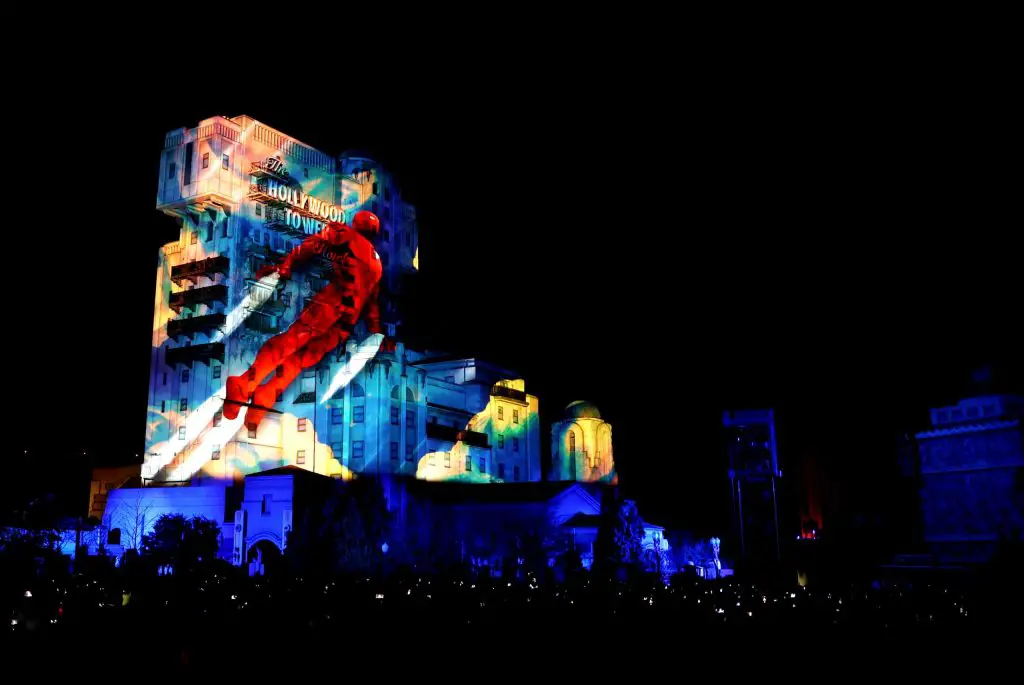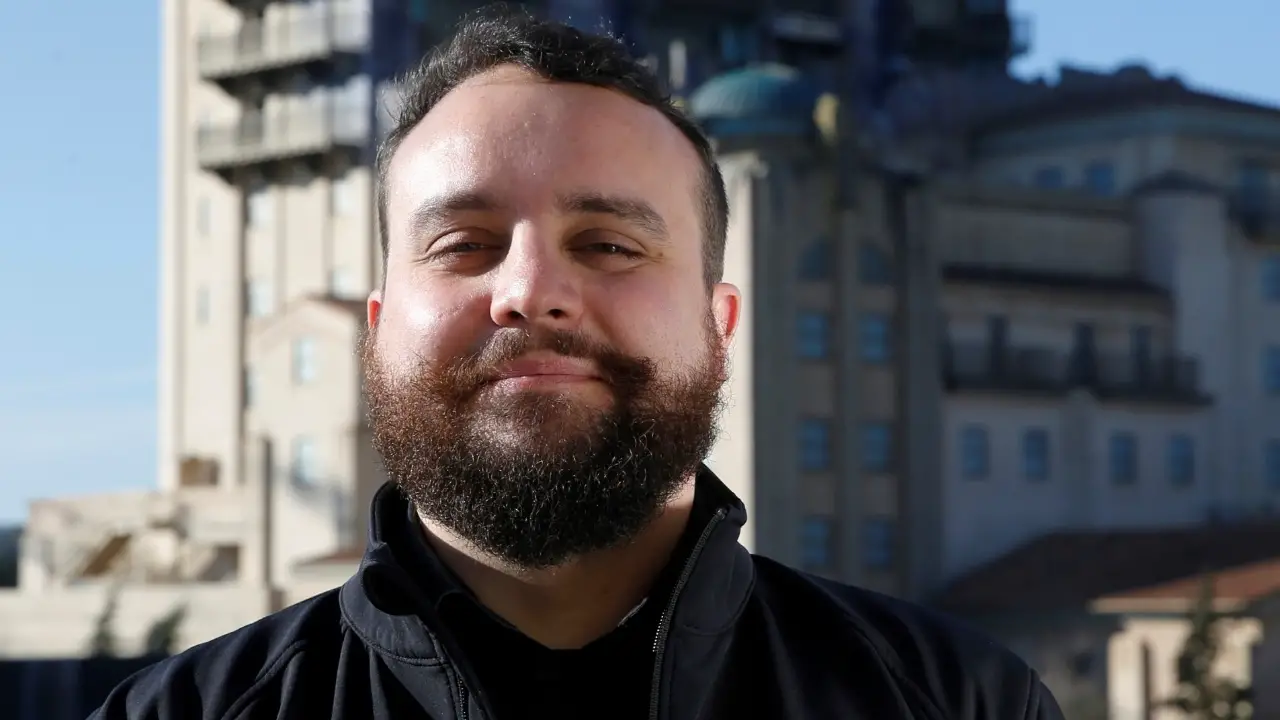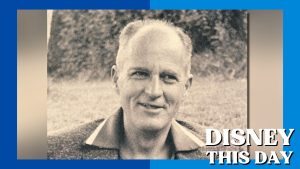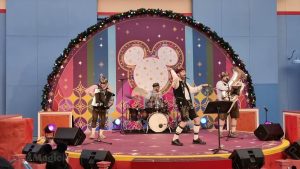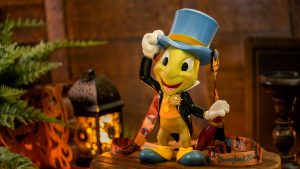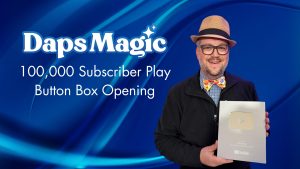Martin Clérer is the video and show control designer for Avengers: Power the Night at Walt Disney Studios Park at Disneyland Paris. In this interview, he shares about his experience as part of the show’s creative team. Read the full interview below.

Martin, tell us about your work at Disneyland Paris.
I work on the technical design of new experiences. This could be in an indoor or outdoor theatre, or even on a parade. The artistic teams have the idea, the vision, and my job is to transform it into a technical concept so that the magic can operate.
How did you get into this role?
I worked extensively in Canada previously. I started as a video technician, and eventually I got to be in charge of an entire department for a large company that specialised in events. I did a lot of mapping, but also political, sports and corporate events. When I came back to France, I came across a job ad for Disneyland Paris and I decided to go for it. I have always been a fan, and joining the company is like a dream come true. I started a little over three years ago as a Video Stage Manager for Shows. I was in charge of the parks’ team of video technicians and managed the operational part of our various productions. For example, I participated in Star Wars: A Galactic Celebration, which was a great experience. Since May 2022, I have worked as a Video and Show Control Designer for the Disneyland Paris Shows department.
What was your role in Avengers: Power the Night?
My role was to act as a link between the people who developed the various media used in the show and Arnaud, our show director. For this, we relied on the system that had already proven itself during the Legends of the Force season which we then updated with the maintenance teams. Then we did a lot of on-site tests to achieve a real synergy between the video, the special effects, the lighting, the lasers and of course the drones. This was all done at 4 am so that it would remain a surprise until the evening of the premiere!
When did you start working on the project?
I was involved very early on, as soon as the project really got going and the director presented his first ideas to the Marvel teams. As a result, I was able to follow the ideas as they developed really closely and see what was feasible from a technical point of view. On Avengers: Power the Night, everything worked right from the start, which made it a lot easier.
What was it like to work with Arnaud?
We mainly worked together during the on-site tests. Our discussions focused on character movements and their placement on The Twilight Zone Tower of Terror.I contributed my technical expertise to suggest this or that placement according to the desired effects. We also had to consider the fact that guests’ views differ when they are completely on the right or left side of Production Courtyard, so we worked to ensure that everyone in the audience would have the best possible experience.
How are the show’s videos created?
It’s all thanks to the talent of our in-house motion design teams, who are used to working with The Twilight Zone Tower of Terror. They have a 3D model of the attraction in their machines, and they draw right on it, so they delivered something that was ready to go. I assembled the media edit in our video servers and did the programming, the opening transitions, the F.R.I.D.A.Y. announcements and the end of the show, but the essentials were there.
How do you go from computer modelling to full-scale testing?
Media can look perfect on a monitor, but the ochre tones of The Twilight Zone Tower of Terror require some adjustments to the colours. Similarly, some transitions may work on a monitor, but once you add the pyrotechnics and other effects you might not get the intended effect. It’s up to me to adjust in real time, in particular the placement of the characters on the tower, to see how they can shoot or throw objects, or what pyrotechnics to use so that everything works in harmony with the video.
To be even more efficient, we connected the motion design machine directly to our system, just like a live camera, and thanks to this, the motion designer could make the necessary changes directly during the tests, which saved a lot of time.
What is unique about using the tower as a platform?
The advantage is that it’s very square, so there is a good area to use. The challenge was to make sure that it could fade into the background to accommodate the projected characters. This meant we had to work on the media so that viewers could forget about the tower and be totally immersed in the Marvel Super Hero universe.
How did you organise the interactions between the various media?
Lasers are a good example. In a lot of scenes, they are used to highlight certain movements such as shooting arrows. We therefore had to provide the video elements early on so that the designer in charge of this effect could work as closely as possible to the visual. Only then do we move on to full-scale testing, to make sure that what we have imagined in our heads and on our computers actually works in the real world.
How did you manage the balance between video and drones?
Avengers: Power the Night is a drone show. That’s what gives this experience its ‘wow’ factor. So when the drones appear, we had to make sure that the video is as understated as possible, especially in terms of movement. During these moments, the video kind of fades away to avoid attracting attention and to allow the drones to perform. It’s a real ballet between each discipline and each trade.
What role did music play in the conception of the show?
It is the show’s conductor – it sets the duration and rhythm of all the individual moments. We all have the soundtrack, especially the motion designers, and it’s what keeps everyone in sync.
How does your operational experience contribute to your current work?
When you imagine a show, you also have to consider the fact that it will be performed every night, sometimes several times a night, with the same quality and the same result each and every time. This means that the equipment needs to be durable, and the operators need to be comfortable with the way it works. Having been in operations before allowed me to take the reality of the show into account, and to work with that in mind to ensure an identical experience every night.
A show of this scale requires a lot of preparation on a daily basis.
It requires a lot of advance checks every day. The video technicians arrive at least 4 hours before the start of the show and they have a whole procedure to follow to check each video projector and make sure that the media servers, the machines that will do the video mapping, are working properly. We also have all sorts of safety devices and backup systems to ensure that the show can still be performed in the best conditions if a technical problem arises.
How many people are involved in the video?
In terms of video designers, there are two of us. The operational team currently consists of about ten operators, their number changes according to needs and events. The maintenance teams are much larger, as they are responsible for a lot of equipment – there are about 60 people.
What challenges did you face in developing this new show?
The main challenge was the time frame. We had two months to complete the entire show, which is very tight. There is also the synchronisation between all the components. I believe that we have never had so many interactions to manage – like the integrated use of lasers. The drones were also designed as a continuation of the video, like when Captain America throws his shield. There is immediate continuity in the sky with the drones, and that’s precisely what makes this show so stunning and unique.
In situations like these, teamwork is essential.
I think that it did create a bond between us. We have incredible in-house resources. Working directly with our colleagues, without an external studio, allowed us to show what we are capable of doing together. It also allowed for some very exciting ideas to emerge and led to a fantastic result.
What is your favourite part of the show?
Since I’m a Marvel fan, I really love the whole show, but if I had to pick just one moment, I would choose the sequence with Vision. There aren’t any drones, the effect is based on the laser coming out of his forehead and him flying off. We managed to position the character on the tower in such a way that the laser was in exactly the right place. We weren’t sure if we were going to keep this part, but in the end, we found that it worked perfectly. I’m glad we kept it!
I’ll never forget the show’s Premiere either. We were all with the audience in the middle of Production Courtyard and I was particularly touched by the children’s reactions. They were thrilled to see their favourite heroes and laughed at the sight of the Wasp buzzing around and Groot scratching records on The Twilight Zone Tower of Terror! That’s when you know you are experiencing something truly magical!
